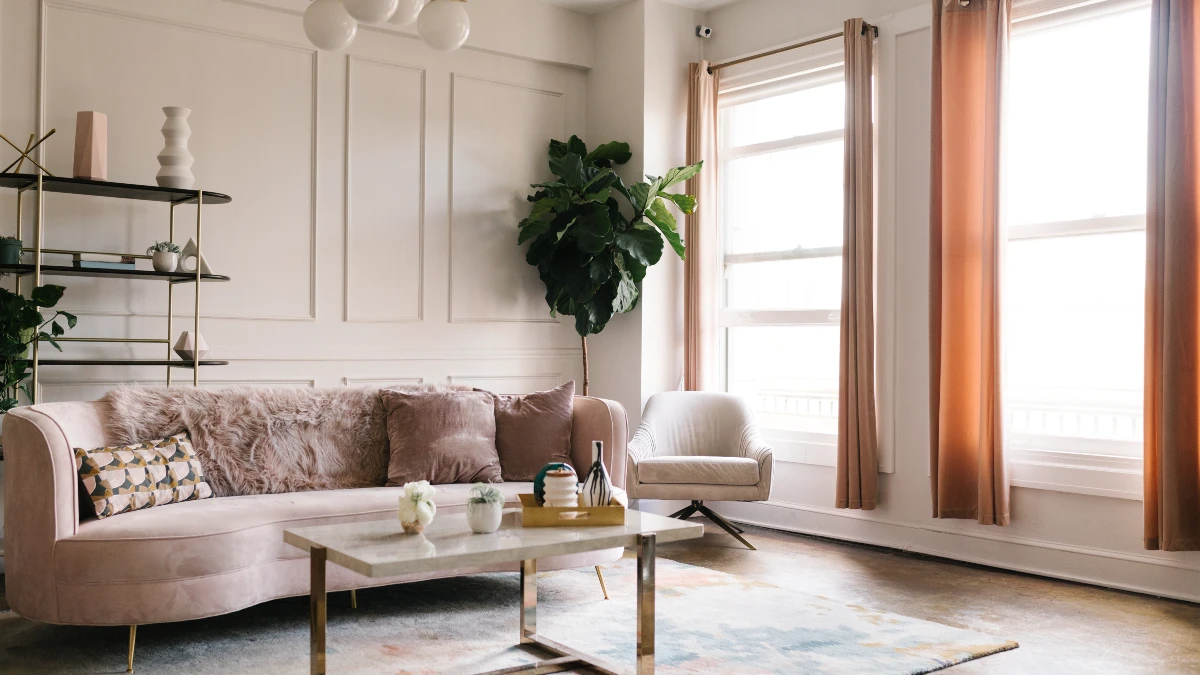You walk into your living room, look around, and feel… nothing. It’s functional, it’s clean, but it’s undeniably boring.
You’re not alone. It’s the common “sad beige” or “showroom” feeling. You have all the right pieces—a sofa, a coffee table, a TV—but the room has zero personality. It feels like a space you simply exist in, not one you truly love. This sterile feeling is one of the most common living room decorating mistakes people make.
This guide isn’t just a list of things to buy. We will diagnose the why behind your boring living room, focusing on 6 common mistakes. For each one, you’ll get clear, actionable steps on how to make a living room less boring—and many of them you can do today, for free.
Your Layout is a “Wallflower”
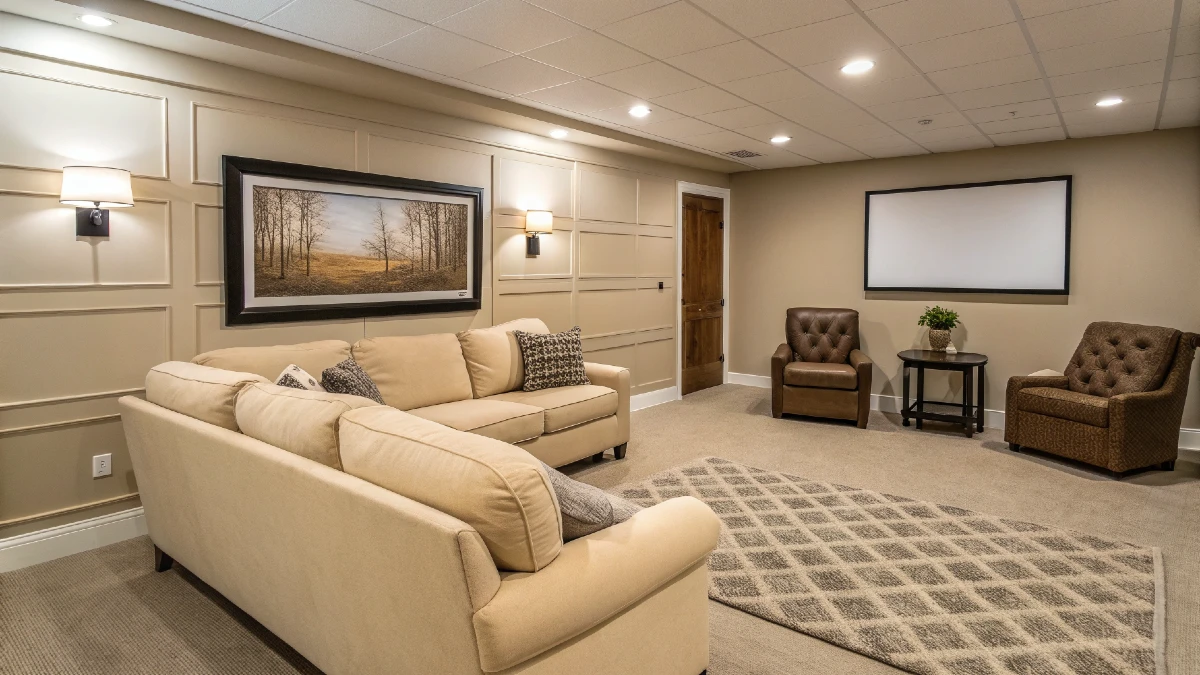
Let’s check your living room layout right now. Is every single piece of furniture—the sofa, the chairs, the side tables—pushed flat against a wall? This is the “wallflower” layout, and it’s a primary reason your room feels static and lifeless.
This layout creates a vast, empty “dead zone” in the center of the room. It kills intimacy and makes the space feel uninviting, more like a doctor’s waiting room than a cozy home.
The fix is simple: float your furniture. You don’t need a massive room to do this. Even pulling your sofa just 6 inches off the wall creates breathing room and instantly makes the space feel more dynamic and intentional.
The goal is to create an intimate conversation area. A core rule designers follow is that seating should be no more than 8 feet apart to facilitate easy conversation without shouting.
How to do it: The best way to create this zone is to anchor with a rug. A rug visually defines the seating area. A non-negotiable rule: at a minimum, the front legs of your sofa and all your chairs must be on the rug. This one move visually pulls the entire space together and creates a purposeful, cozy zone.
Your Lighting is One-Note

If your only living room lighting comes from a single fixture in the middle of the ceiling, you’re living under the tyranny of “the big light.” This single, harsh light source is a major design sin.
It flattens everything in the room, casting unflattering shadows, making colors look dull, and offering zero ambiance. It’s functional, but it has no feeling.
The professional solution is layered lighting. Designers never, ever rely on one light source. They aim for at least 3-5 light sources in a typical living room, even small ones. Every room needs these three layers of light:
- Ambient (Overall): This is your overhead light, but it should just be the foundation, not the whole story. If you do nothing else, install a dimmer switch.
- Task (Purpose): This is focused light for specific activities. Think of a floor lamp for reading by your favorite armchair or a small, stylish desk lamp on a console table.
- Accent (Mood): This is the secret weapon. It’s the soft, warm white glow that makes a room feel cozy and inviting. This comes from table lamps on side tables, wall sconces, or even a picture light over your art.
Crucial 2025 Tip: Check your lightbulbs. You must use warm white bulbs (labeled as 2700K to 3000K). Anything 4000K or higher is “cool white” and emits a sterile, blueish light that makes your home feel like a corporate office or a hospital. This is the fastest, cheapest way to add warmth.
You’re Texturally “Flat”
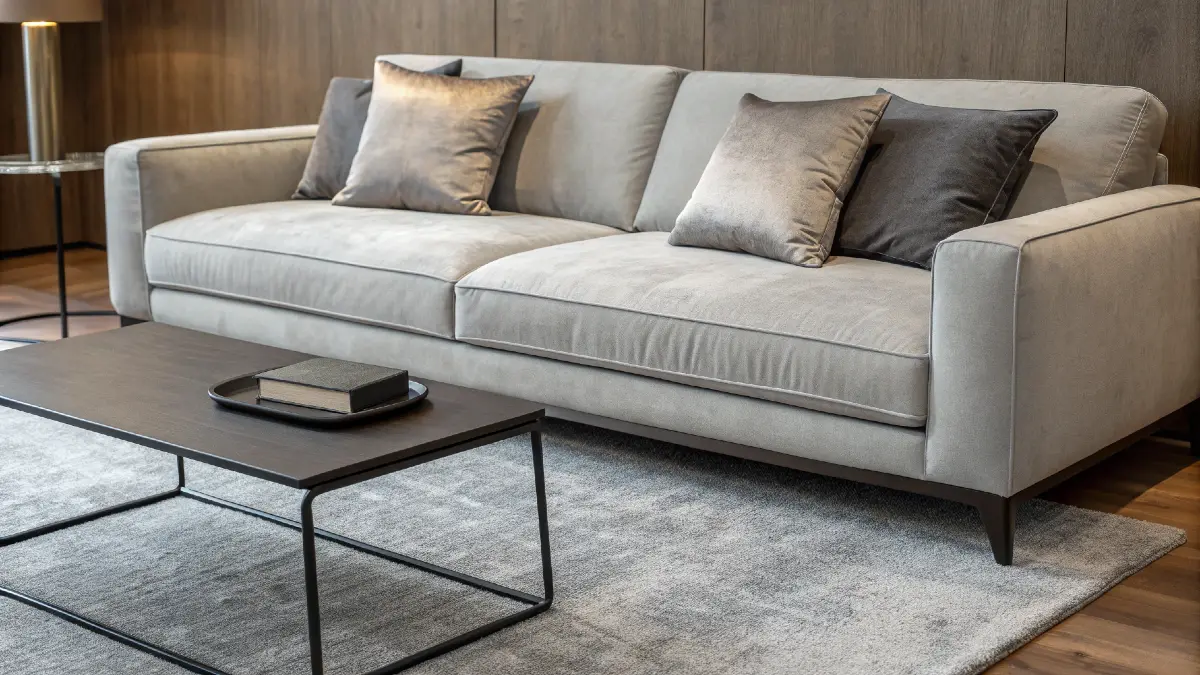
Look at your living room, but this time, feel it. You might have a smooth polyester sofa, a low-pile (flat) rug, simple cotton pillows, and a smooth metal coffee table. Everything is one-note.
A texturally “flat” room is visually boring because the eye has nothing interesting to land on. It lacks physical depth and warmth. To fix this, you must add texture to your living room by creating tactile contrast.
The goal is a rich, layered mix of hard, soft, rough, and smooth surfaces. This is the core principle behind 2025’s biggest trends like “Japandi” and “quiet luxury.” Think about layering textiles and materials:
- If your sofa is smooth (like leather or a tight weave), add a rough texture like a chunky knit throw blanket or heavily woven linen pillows.
- If your floor is hard (wood or tile), add a soft element like a plush, high-pile rug or even a smaller faux-fur rug layered on top.
- Mix materials across your furniture. Pair a soft, curved bouclé chair (a very popular 2025 texture) with a hard, natural-grain wood side table. Add elements of fluted wood, rattan, velvet, or jute.
This tactile variety is what makes a room feel complete, curated, and expensive, even if the color palette is simple.
You Skipped the “Life” Layer
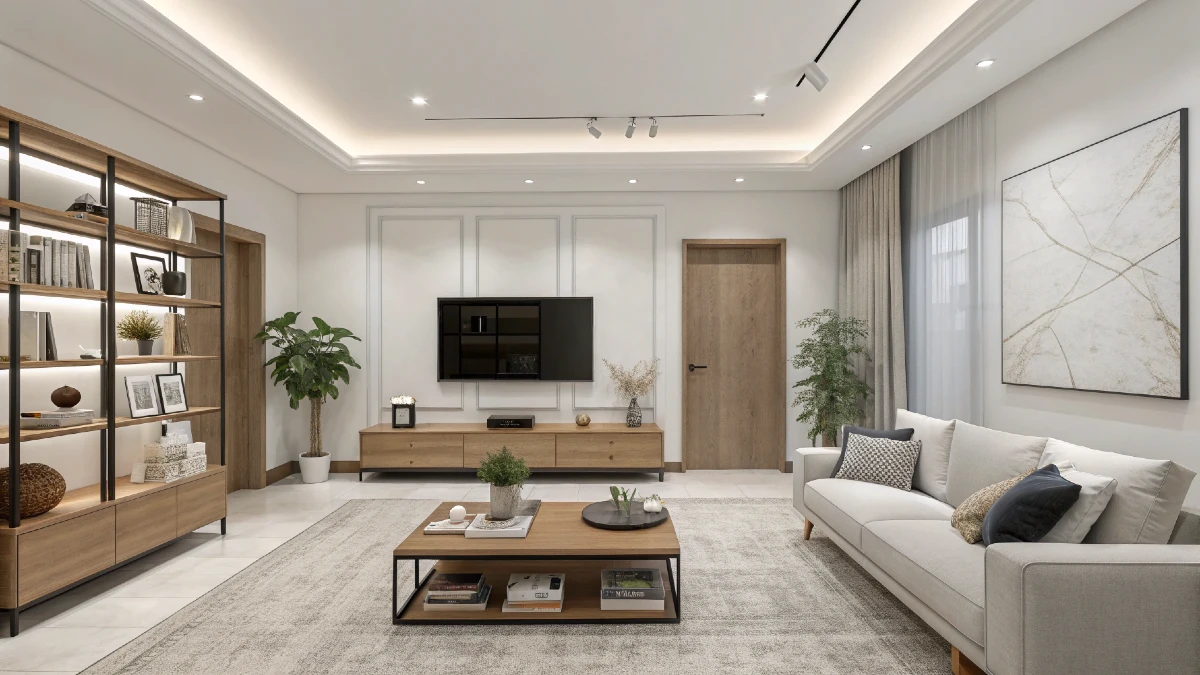
Your room has furniture and lighting, but does it have a pulse? A sterile, impersonal room will always, always feel boring. This mistake comes in two parts.
First, you’re missing literal life. Biophilic design is a key 2025 concept, but it’s simple: humans crave a connection to nature. Indoor plants are the fastest, cheapest way to fix a boring living room. They add organic, sculptural shapes that break up all the boring straight lines of furniture, and they add a vibrant punch of color. You don’t need a green thumb; start with indestructible options like a Snake Plant, Pothos, or ZZ Plant.
Second, you’re missing your life. A boring room is often just an impersonal one. It’s time to add personality to your living room. This isn’t about adding “clutter”; it’s about curating items that tell your story.
Try This Today: Swap that generic “Live, Laugh, Love” sign for a framed piece of art from a local artist you admire. Get your favorite books out of a box and stack them on the coffee table. Frame a few photos of people, pets, or places you genuinely love. A home that reflects its owner is the exact opposite of boring.
Your Art is Hung All Wrong
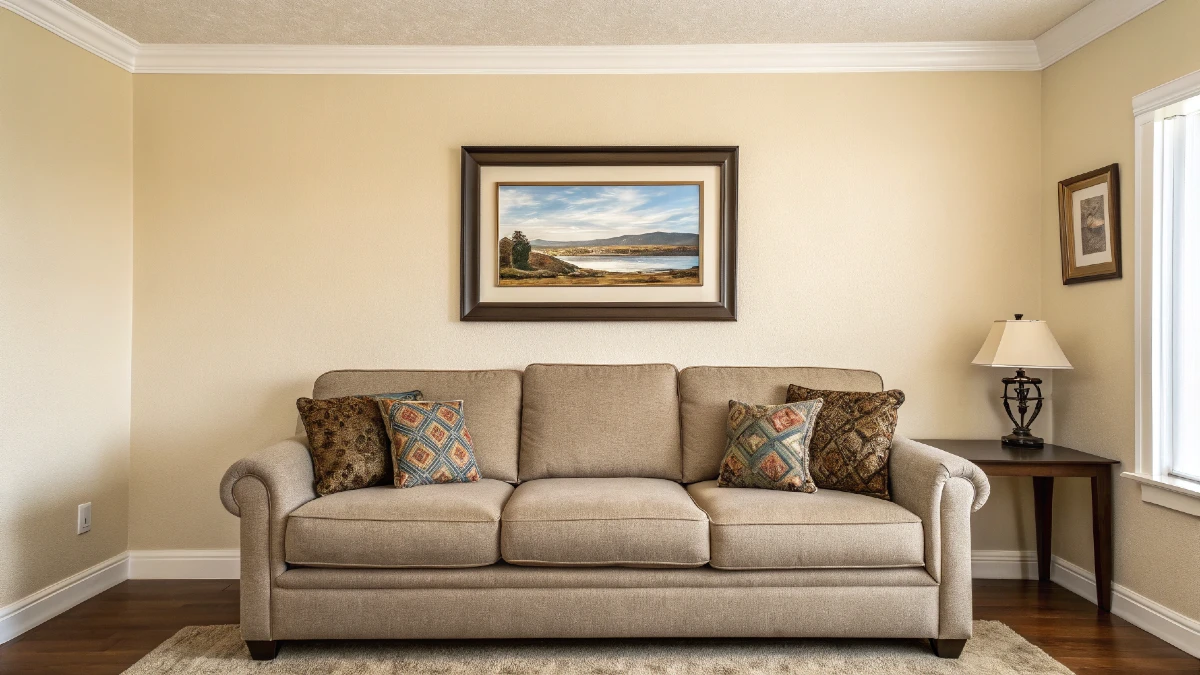
Bare walls are a clear sign of a boring living room. But almost as bad is living room wall decor that’s hung completely wrong.
The most common mistakes? Hanging art way too high (it floats disconnectedly near the ceiling) or using pieces that are far too small for the wall (the “postage stamp” effect).
There is a science to how to hang art. Here are the non-negotiable gallery wall rules that designers and museums use.
- The 57-Inch Rule: The center of your artwork (or the focal point of a gallery wall grouping) should be 57 inches from the floor. This is the standard human eye level. This anchors the art to the human scale of the room, not the architectural scale of the wall, making it feel instantly right.
- The Sofa Rule: When hanging art over a sofa, it must relate to the sofa, not the wall. The piece (or the entire grouping) should be about 2/3 the total width of the sofa.
- The Gap Rule: Hang art 6 to 8 inches above the back of the sofa or console table. Any higher, and it looks like it’s floating away. Any lower, and it feels cramped.
You Bought the “Set”
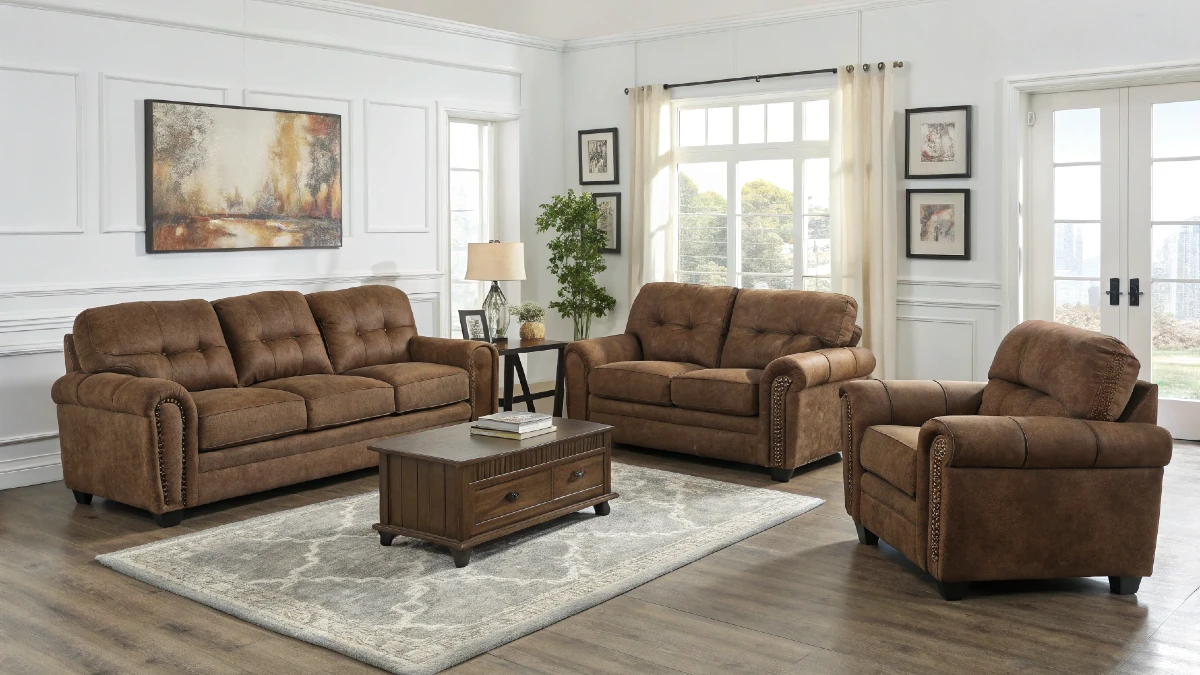
We’ve all seen the deal: the sofa, matching loveseat, and matching armchair for one low price. Matching furniture sets are the easiest way to furnish a room, but they are also a guaranteed recipe for a boring living room.
Why? Because it shows zero curation or personality. It tells the story of a single 30-minute shopping trip, not a home that has been thoughtfully built over time.
The fix for curated decor is to break up the set. If you already own one, you don’t have to sell it all. Take the matching loveseat and move it to your bedroom or home office. In its place, buy two accent chairs that are different from your sofa.
This contrast is what creates visual interest. Try pairing a neutral fabric sofa with two rich leather chairs. Or, pair a simple beige sofa with two patterned chairs in a bold color. This creates “visual tension,” which is the exact opposite of boring. A curated room will always look more interesting and expensive than a matching one.
Conclusion
A boring living room is rarely the result of having “bad” furniture. As we’ve seen, it’s almost always a symptom of flat layers—a “wallflower” layout, one-note lighting, or a lack of texture and personality.
You don’t need to fix all these living room decorating mistakes at once. Pick one to tackle this weekend. Here’s your challenge: Pull your sofa 6 inches off the wall and buy one new lamp with a 2700K bulb. You will be astonished at the difference.
Fixing your boring living room isn’t about a total overhaul. It’s about making intentional choices that add personality to your living room, one layer at a time.

